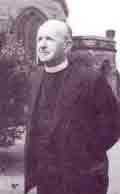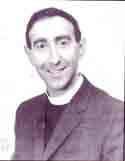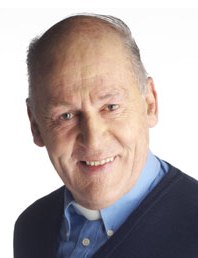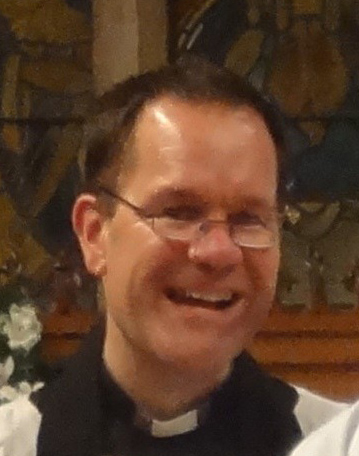EARLY HISTORY
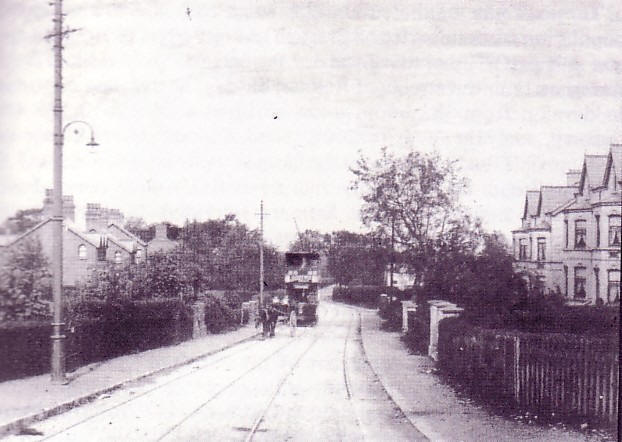
On the evening of 11th September, 1928, a handful of men assembled in a hall on the Knockbreda Road. The chairman was a clergyman, curate-in-charge, Rev. C.W.A. Huston. The existence of this committee was a response to the growing population of the district of Cregagh.
As late even as 1928 the area was still partly inhabited by dairy farmers who sold milk daily off spring carts in the streets of Belfast; but, as the city had continued to develop from the boom years of linen and ships in the 19th century, and the new tramway service made travel cheap and easy, people had spilled out to houses built on each side of the Cregagh Road. So, gradually the green fields were covered with streets of houses and the farmers retreated further into the countryside.
Cregagh had always been part of the Parish of Knockbreda and that ancient church had served well enough for the old population of farmers and farm labourers that had been there for generations. The new population, however, establishing homes and gardens and young families in an unfamiliar territory, found Knockbreda too remote. In those days the end of the tramlines seemed like the end of the world. Few of them wanted to traverse the Hillfoot Road, then more like a country lane, as far as Knockbreda, in all kinds of weather.
Perhaps, too, as new arrivals they felt that the church at Knockbreda, in existence for centuries, with its own hierarchy and order, was alien to their lives, somehow unbreachable. Whatever the reasons, the small attendances from Cregagh had been noted by the church authorities. They had established a hall along the Knockbreda Road in McCaughan Park, at the foot of a deep glen. It was something of a mission hall, built in red brick, high above a dangerous corner on the road, surrounded by trees, gloomy. A curate from Knockbreda conducted services there.
It was evident that something more was required than a missionary sent from a nearby church. The new settlement in Cregagh was fraught with the anxieties of any new settlement. There was little sense of neighbourhood, even less of continuity. There were few of the patterns of kinship that exist in an older and more ordered community. There was no school, no social centre, no police barracks, no library, scarcely a community organisation, certainly no welfare workers. Unemployment was high, the dole was low, families were large…
…And so it was that a handful of men met on that evening of 11th September, 1928. They met to transform a collection of people into a community, to provide cohesion in a changing world, something that would give shape to life itself.
Their intention was to build a church.
Extracts from St. Finnian’s Cregagh by David Hammond
FOUNDATION AND CONSECRATION
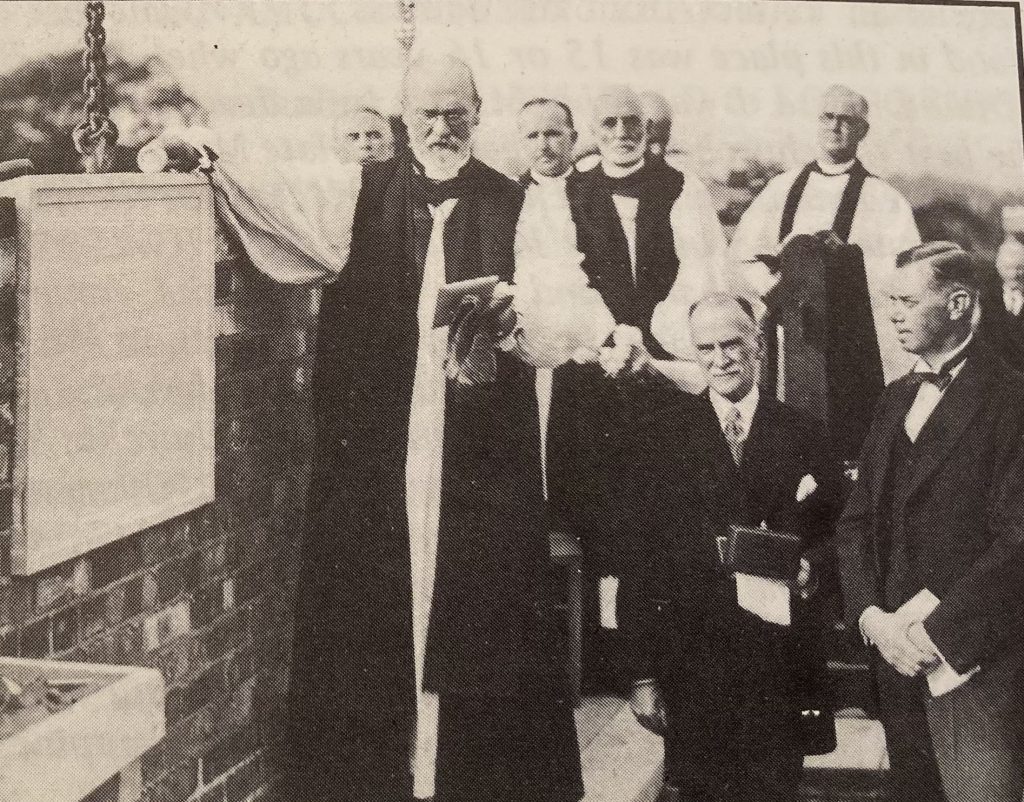
On Saturday 19th September, 1931, the foundation stone of St. Finnian’s was laid by His Grace, the Most Rev. Charles Frederick D’Arcy, D.D., Archbishop of Armagh and Primate of all Ireland.
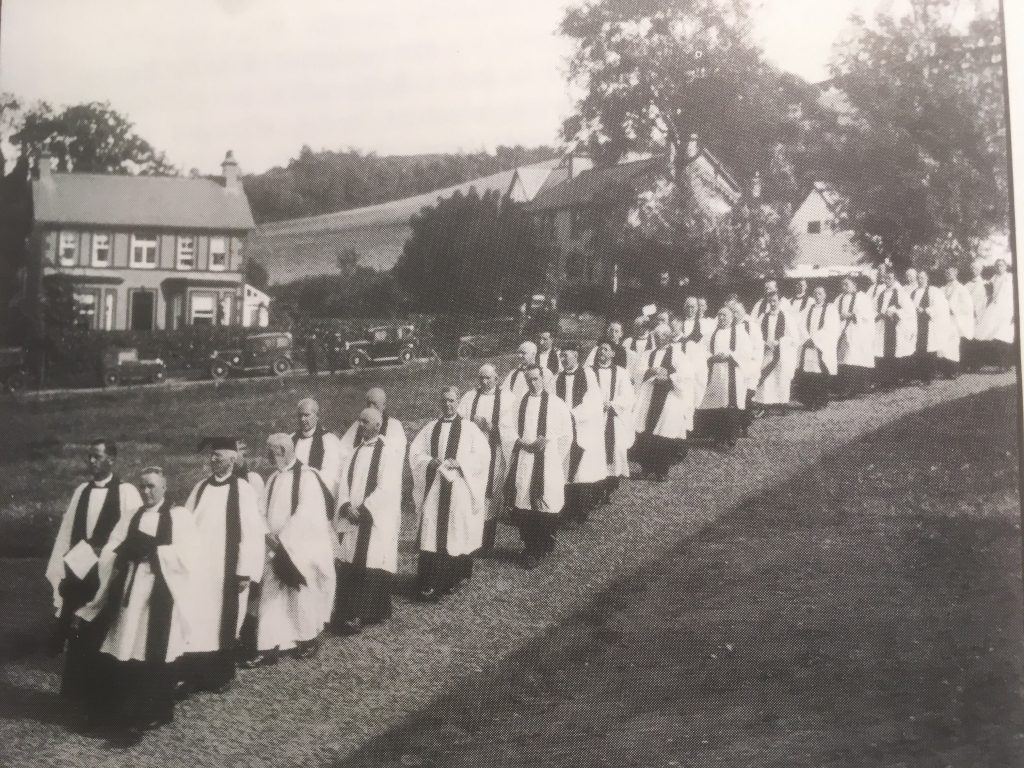
St. Finnian’s, Cregagh, was consecrated on Saturday 10th September, 1932, the Feast of St. Finnian, by the Right Rev. Dr. C. T. P. Grierson, D.D., Lord Bishop of Down and Connor and Dromore. It was a bright and beautiful day and the church was filled to overflowing. The Lord Bishop of Derry and Raphoe, the Right Rev. J. I. Peacock, D.D., preached the special sermon. He selected for his text the words from the Revelation of St. John, 3rd Chapter, verse 8: “Behold I have set before thee an open door, and no man can shut it”.
INCUMBENTS
Canon Charles William Archibald Huston MA.
Canon Huston was a man of stern quality, a man who lived by precept, with utter obedience to the rules and procedures of the Church. Church teaching was sacred, he followed the rubrics to the letter.
Yet he was not a man without imagination. He took pride in his skill as a teacher, his knowledge of educational method, and employed in his teaching a wide variety of approaches that ranged from drama through illustration to straight exposition. The books that he compiled for use in Bible study, or with confirmation candidates, or for the understanding of the Catechism, are still in existence and they are models of intense preparation and minute detail
Church services were also informed by this imagination, for he believed that music and a gracious environment would lead to a deeper reverence, conducive to worship.
In an era when most Protestant churches remained closed on days like Good Friday and Christmas, his observance of the saints’ days and holy days was controversial.
Ill health pursued him for the last sixteen years of his ministry and, according to medical opinion, nobody could have faulted him if he had taken to his bed in the 1950s. But he never surrendered to his arthritis, for he had always abjured the love of ease and comfort; and his determination kept him on his feet long after it was advisable. Indeed, in 1953, when walking was already painful, he climbed Slieve Donard (he was 61 years of age) in the company of a parishioner, simply to prove to himself that it could be done.
Canon C.W.A. Huston died in February, 1968.
Right Rev. James Mehaffey M.A., B.D., Ph.D
The Rev. James Mehaffey was instituted on Saturday 23rd July, 1966. It soon became clear that those who had chosen Mr. Mehaffey had chosen well. He was academically gifted, democratic in his ministry, and aware of its ideals. St. Finnian’s was a provident and well organised community: nevertheless, it needed the cohesion and direction that only a good leader could provide.
He started as he meant to continue, getting to know the parishioners and allowing them to get to know him; sounding attitudes, discovering the mainsprings of parish life. People liked him because he made them feel important.
It was this regard for the importance of the individual that informed his ministry. While able to delegate responsibility, he was always ready to offer encouragement and to give support.
He was a man who was open to other opinions, tolerant of other views of the world, and he encouraged the people of St. Finnian’s to consider all the choices before they took a decision.
Gradually, through his belief in an open society, he led the parish towards a greater participation by the laity in the spiritual life of the parish.
During the ministry of Canon Mehaffey the population of the parish was declining as the birth rate decreased, but the organisations were growing to an extent where extra accommodation was essential. The Huston Hall was completed in 1971.
Canon Mehaffey was appointed Bishop of Derry and Raphoe in 1980.
Canon John Noel Battye, M.A., Dip.Ed., H.Dip.R.E.
The Rev. John Noel Battye was appointed Rector and instituted on Friday, 28th November, 1980, by the Right Rev. R.H.A. Eames, D.D. Bishop of Down and Dromore.
Mr. Battye, ordained in 1966, came to St. Finnian’s as a clergyman of some varied experience. His first curacy was in the market town of Dungannon in the parish of Drumglass, his next in the large urban parish of St. Jude’s, Belfast.
Then in 1973 he entered Pembroke College, Cambridge as chaplain and ministered in this academic world of young students until Bishop Quin invited him in 1978 to act as Bishop’s curate in Knocknagoney. Again Mr. Battye found himself in the changed surroundings of a new parish, experiencing the joys and difficulties of a small urban community on the outskirts of a troubled Belfast.
In the autumn of 1980 the parochial nominators of St. Finnian’s asked him to become their rector and, after his agreement, the Diocesan Board of Nomination unanimously appointed him to St. Finnian’s.
For the parish it proved to be a momentous decision. His presence enriched the parish, his vision expressed through his gift of language inspired the congregation.
Canon Battye retired in December 2008 after 28 years devoted service to St. Finnian’s.
Canon Jonathan Pierce B.A., B.Th
Jonathan (Jono) Pierce was instituted as Rector of St. Finnians on 12th October 2009. Prior to this he served as Rector of Kilmore and Inch (Diocese of Down and Dromore) from 2003. He also served curacies in Knockbreda (Diocese of Down and Dromore) and Taney (Diocese of Dublin).
In between his 2 curacies Jono worked as a house assistant in L’Arche Dublin, a community where people share their lives with people with learning disabilities based on Gospel values.
Jono is married to Victoria, a physiotherapist. They have a daughter, Lucy, and a son, Conor.
In his spare time he loves to spend time with his family, keep fit and watch sport on television.


